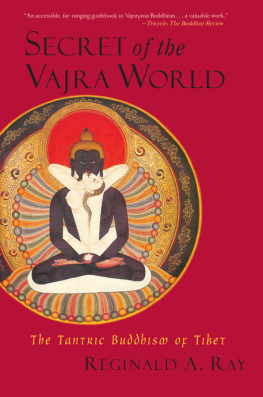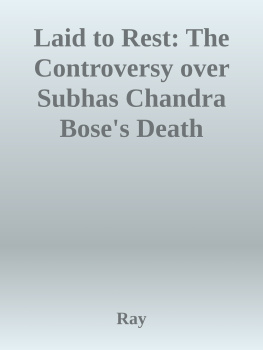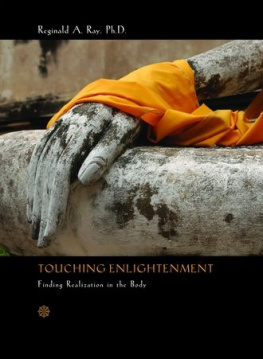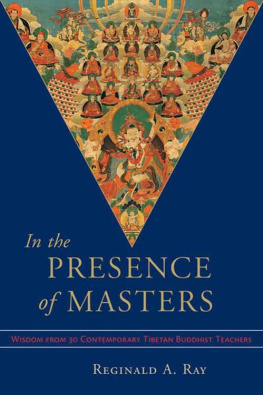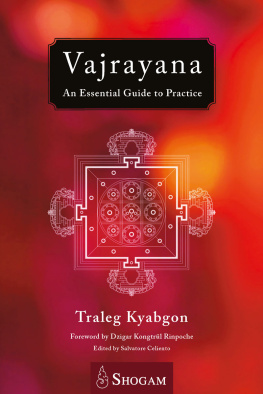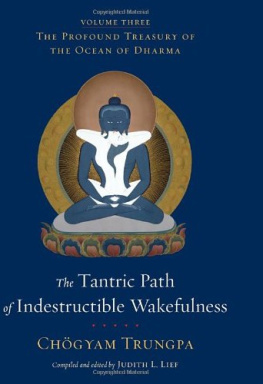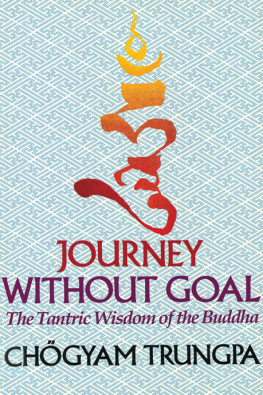An accessible, far-ranging guidebook.
Tricycle
ABOUT THE BOOK
This book provides an entre into the Tantric (or Vajrayana) Buddhism of Tibet, as conveyed by Tibetan masters teaching in the West, and as received by their Western students. The Tantric tradition is a unique collection of lesser-known texts, concepts, and meditation practices that are usually made available only to experienced and specially initiated practitioners.
The Vajra World (vajradhatu in Sanskrit) is a realm of indestructibility, the level of reality beyond all thought and imagination, all impermanence and change, which a fully realized person knows and inhabits. Used metaphorically, Vajra World refers to the traditional culture of Tibet and the unique spirituality that is its secret strength.
Topics include:
- The tantric view of human nature and the external world
- The special role of the guru, or tantric mentor
- The preliminary practices that prepare the student for full initiation
- The major dimensions of Vajrayana practice, including visualizations, liturgies, and inner yogas
- The tradition of the tulku, or incarnate lama
- The lore surrounding the death of ordinary people and of saints
- The practice of solitary retreat, the epitome of traditional Tibetan Buddhism
Secret of the Vajra World is the companion volume to the authors earlier book, Indestructible Truth: The Living Spirituality of Tibetan Buddhism. While that book focuses on the history, cosmology, philosophy, and practice of the more public, exoteric side of Tibetan Buddhism, this work treats its more hidden and esoteric aspects as they take shape in Vajrayana. Together, the two volumes provide a broad introduction to the major traditions of Tibetan Buddhism.
REGINALD A. RAY, PhD, is a faculty member at Naropa University and is President and Spiritual Director of the Dharma Ocean Foundation, which is dedicated to the practice, study, and preservation of the teachings of Chgyam Trungpa. He is also the author of many books, including Indestructible Truth and In the Presence of Masters.
Sign up to learn more about our books and receive special offers from Shambhala Publications.

Or visit us online to sign up at shambhala.com/eshambhala.
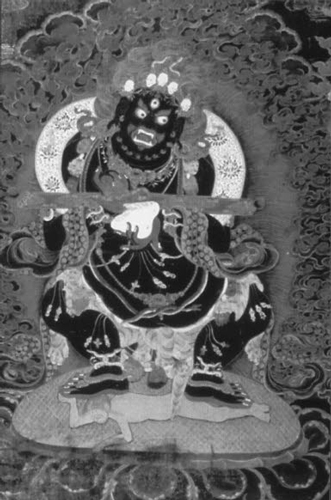
MAHAKALA

SHAMBHALA PUBLICATIONS, INC.
HORTICULTURAL HALL
300 MASSACHUSETTS AVENUE
BOSTON, MASSACHUSETTS 02115
www.shambhala.com
2001 by Reginald A. Ray
Excerpts from The Tibetan Book of Living and Dying, by Sogyal Rinpoche and edited by Patrick Gaffney and Andrew Harvey, copyright 1993 by Rigpa Fellowship, are reprinted by permission of HarperCollins Publishers, Inc.
Further copyright information appears in the .
All rights reserved. No part of this book may be reproduced in any form or by any means, electronic or mechanical, including photocopying, recording, or by any information storage and retrieval system, without permission in writing from the publisher.
LIBRARY OF CONGRESS CATALOGING-IN-PUBLICATION DATA
RAY, REGINALD A.
SECRET OF THE VAJRA WORLD: THE TANTRIC BUDDHISM OF TIBET/REGINALD A. RAY.1ST ED.
P. CM.(THE WORLD OF TIBETAN BUDDHISM; V. 2)
INCLUDES BIBLIOGRAPHICAL REFERENCES AND INDEX.
eISBN 978-0-8348-2523-9
ISBN 978-1-57062-772-9 (ALK. PAPER)
ISBN 978-1-57062-917-4 (PBK.)
1. TANTRIC BUDDHISMCHINATIBET 2. SPIRITUAL LIFETANTRIC BUDDHISM. I. TITLE.
BQ7604 .R39 2002 VOL. 2
[BQ8912.9]
294.3923 SDC21
[294.3/925/095
2002007342
Contents
Secret of the Vajra World is a comprehensive survey of the profound and vast teachings of the Vajrayana, focusing especially on the Kagy and Nyingma lineages. Acharya Rays mastery of the subject and devotion to the traditionan inspiring combination of giftspermeate the entire book. Streams of nectarlike quotations from the warm breath of many great masters and an abundance of illuminating stories produce a book that is meaningful, enchanting, and easy to understand. Taken together with the authors earlier work, Indestructible Truth, it provides an indepth treatment of Tibetan Buddhism, including both its exoteric (Hinayana and Mahayana) and esoteric (Vajrayana) vehicles, illuminating its philosophical basis, meditation practices, goal of enlightenment, cultural context, and historical background.
Buddhism offers multiple approaches to awaken the enlightened nature of the mind. The true nature of the mind is enlightened, the utmost peace, openness, and omniscience. Conceptual notions of forms, words, and feelings are mere designations created and felt by the dualistic mind, all rooted in grasping at a self, perceived as a truly existing entity. Therefore, when the enlightened nature of the mind is awakened, our grasping mentality dissolves and all the mental objectsthe whole universeare awakened as the Buddhafield, the qualities of the enlightened nature. Jetsun Milarepa said:
Dont you know that all the appearances are the nature of your mind?
Dont you know that [the nature of] your mind is Buddha?
Dont you know that Buddha is the ultimate body (dharmakaya)?
Dont you know that ultimate body is the ultimate nature (dharmata)?
For us unawakened beings, the enlightened nature of our mind has been obscured because of our own dualistic concepts and emotional afflictions rooted in grasping at self. The minds true nature has become unknown to us, like a treasure buried under layers of earth. But when the true nature is uncovered through the right Buddhist training that suits us, we become the Fully Awakened One, the Buddha. Buddha said:
Beings are Buddha in their nature.
But their nature has been obscured by adventitious defilements.
When the defilements are cleared,
They themselves are the very Buddhas.
Buddhist trainings start with taming the mind, because the mind is the source of all our mental events and physical actions. If our mind is peaceful and kind, all our thoughts and efforts will benefit ourselves and others. Buddhist trainings lead us directly to, or at least toward, the goalthe realization of Buddhahood, the true nature of the mind and the whole universe.
Buddhist trainings comprise a wide range of approaches, each adapted to the particular needs of different kinds of trainees. Nevertheless, all can be distilled into three major vehicles, or yanas.
Fundamental Buddhism (Hinayana): In this training, practitioners avoid encountering the sources of negative mentalities and emotions by, for instance, living in solitary places and observing celibacy. This approach is like walking around a poisonous tree to avoid its afflictions. This is the path of pratimoksha (individual liberation), which primarily emphasizes adhering to a set of physical disciplines and refraining from harming others.
Progressive Buddhism (Mahayana): In this training, practitioners face negative concepts and emotions and their sources, and conquer them through the use of the right antidotes, such as conquering anger through compassion and tolerance. This approach is like talking to the poisonous tree and cutting it with an ax. This is the path of the bodhisattva (adherent of enlightenment), which emphasizes observing bodhichitta
Next page
